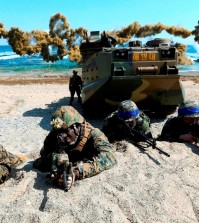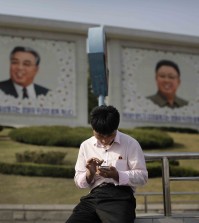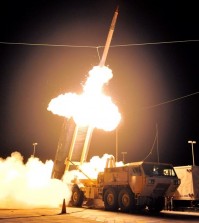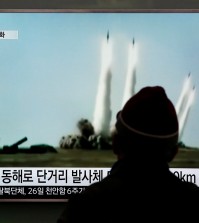- California Assembly OKs highest minimum wage in nation
- S. Korea unveils first graphic cigarette warnings
- US joins with South Korea, Japan in bid to deter North Korea
- LPGA golfer Chun In-gee finally back in action
- S. Korea won’t be top seed in final World Cup qualification round
- US men’s soccer misses 2nd straight Olympics
- US back on track in qualifying with 4-0 win over Guatemala
- High-intensity workout injuries spawn cottage industry
- CDC expands range of Zika mosquitoes into parts of Northeast
- Who knew? ‘The Walking Dead’ is helping families connect
NK missile threat “practical” : US official
By Kim Tae-gyu
A high-ranking U.S. defense official said Friday that North Korea’s ballistic missiles pose genuine threats to America, which has kept a close eye on Pyongyang’s military capabilities.
Gen. Charles Jacoby, the chief of the North American Aerospace Defense Command and U.S. Northern Command, made the remarks during a Senate hearing on next year’s defense budget.
“With regard to missile defense, tangible evidence of North Korean and Iranian ambitions confirms that a limited ballistic missile threat to the homeland has matured from a theoretical to a practical consideration,” he said.
Jacoby agreed to the need to deploy a new long-range “discriminating” radar in order to upgrade the defense of the U.S. against rising missile threats posed by the Stalinist state.
The comments are in tandem with the testimony he gave late last month to the House of Representatives.
“While tensions have subsided for the time being, North Korea continues to ignore United Nations resolutions and seeks international recognition as a nuclear-armed state, which we oppose,” the general said.
“North Korea again showcased its new road-mobile intercontinental ballistic missile during a military parade last July. Moreover, we are concerned about the potential for these lethal technologies to proliferate to other actors.”
In the meantime, Gen. Martin Dempsey, chairman of the Joint Chiefs of Staff, also stressed the mounting risks from Pyongyang.
“Our threats can be described as two, two, two and one: two heavyweights, Russia and China; two middleweights, (North) Korea and Iran; two networks, al-Qaida and the transnational criminal network that runs from south to north in this hemisphere; and one domain, cyber,” he told a House hearing.















